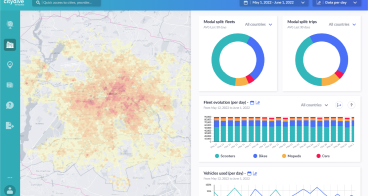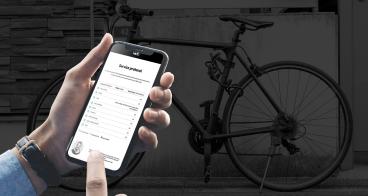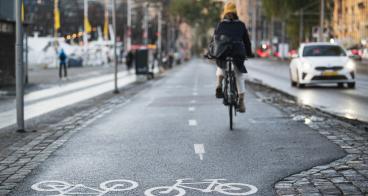The progress of shared micro mobility across Europe | Keynote by Augustin Friede
Despite controversial discussions and regulations, shared micro mobility with e-bikes, normal bikes, e-scooters or e-mopeds in cities across Europe kept rising over the past year. Augustin Friedel updates where the European cities stand, and reflects on remaining challenges and new enablers.
The expansion of shared micro mobility services continued in 2022 and early 2023, close to 1.700 deployments of free-floating shared mobility services (to this number approximately 1.000 station-based bike sharing services could be added) could be found in more than 600 towns and cities across the continent.
That means that free-floating shared micro mobility schemes expanded to more than 50% of the European cities since the trend started five years ago. There should be more than 600.000 shared free-floating vehicles on the streets of European cities. This seems to be a huge amount of services and vehicles, but in fact the modal share of e-scooter rides is minimal. Based on an estimate, below 0.5% of daily trips in a city are made by e-scooters, so there is room to grow to bring the benefits of shared micro mobility to the cities.
Fast vehicle iteration cycles improve services and sustainability aspects
Operators of shared micro mobility services and device manufacturers keep pushing to bring micro mobility vehicles with increased comfort, safety features and improved sustainability aspects to the markets across Europe. E-scooters are getting equipped with smart ADAS systems, bigger wheels and improved form factors for more safety and convenience. The learnings from shared e-scooters are applied to e-bikes. As a result, shared E-bikes are seeing a revival after service operators shelved their fleets around 4 years ago. In general, sustainability aspects are improved, so that emissions over lifetime decrease and the lifetime of the devices increase constantly.
Shared services and manufacturers listen to their customers and stakeholders. The latest generations of devices are optimized for sharing and meet the user expectations better than the previous generations. Some cities prefer shared e-bikes over e-scooters, so operators can use their chances to expand their business and to improve their relationships with the municipalities. City authorities and operators should work together to find the best vehicle type and fleet size to meet the demand and user expectations in their cities.
Positive impacts on emissions, travel times and costs
Electric shared micro mobility could have a positive impact, as CO2 emissions are way lower in comparison to a ride hailing or private car trip. E-scooters and e-bikes could have a positive effect on the carbon emissions within urban areas. Latest research by Fraunhofer shows that an e-scooter generates just 20% to 25% of the emissions of a private car. The effect is even bigger, when the e-scooter is compared to a ride hailing trip. The lifespan of shared e-scooters improved with every new generation – Mobility service provider mentioned in the latest Corporate Sustainability Report that lifespan increase to over 5 years in 2022, in 2019 an e-scooter lasted only for 2 years.
Shared micro mobility could also have a positive impact on reducing traffic. Research from Atlanta shows that travel times increased by around 10% when the city officials banned e-scooters for usage during the night. Shared micro mobility could save time and reduce the cost of time spend in traffic.
In addition to reduce the cost of time spend in traffic, a recent survey from bitkom says that 79% of respondents agree that shared mobility in general is reducing overall mobility costs for individuals. Shared micro mobility has a significant impact, as most of the daily trips could be made with an e-scooter, bike, or e-moped. The usage costs are lower in comparison to other shared modes like car sharing or ride hailing. This trend could get accelerated by rising living costs and inflation.
Digital platforms as bridge into the future
Various OEMs, public transit agencies and other stakeholders are making progress to bundle shared mobility and public transit on so called Mobility as a Service (MaaS) platforms. It’s interesting in multiple ways, as micro mobility is a logical extension of the public transit systems, so offering both in one app is a no-brainer. In addition, users value if multiple services are bundled in one app. Users see the micro mobility options in the map and could choose and book the preferred vehicle to get from A to B. Jelbi by BVG in Berlin or WienMobil by WienerLinien in Wien are local MaaS apps that are connecting micro mobility with other modes of transport in the cities. Google Maps, one of the largest mobility platforms in the world integrated different micro mobility services across the continent.
Joint activities to improve infrastructure and regulations
An increasing number of cities across Europe value the positive impact of shared micro mobility on the local transportation system and increase their activities to collaborate with operators. The demand from user perspective is unstoppable and micro mobility options are becoming an integrated part of the local transportation landscape. So, cities are getting active to keep shared micro mobility in their markets. When Bird announced to wind down operations in Germany, cities with only Bird as an operator announced quickly to start the discussion with alternative services. Early sceptics, like London expanded the trial period for e-scooters until March 2024. Dott, Lime and Tier hope to get the chance to continue their service. The interest often goes beyond allowing and promoting the services. Multiple cities reallocate road infrastructure for creating bike lanes and parking areas dedicated for e-scooters, bikes, and mopeds. The micro mobility parking infrastructure is expanded in cities across Europe to so called mobility hubs, where citizens could also find other modes of shared mobility or access to public transit.
Impact on modal split is mixed
The results of e-scooters for the modal shift are mixed. Research from Fraunhofer and other reports show that micro mobility is replacing car-based trips like ride-hailing or private car trips. On the other side, e-scooters are replacing walking trips across the investigated markets. Replacing walking trips is seen as not favorable, as traffic on sidewalks and bike lanes is increasing and the share of active mobility is rescued. The study investigated the developments across four different cities across Europe. Details for Paris, Berlin, Stockholm, or Düsseldorf could be compared. In Düsseldorf, 7 per cent of respondents mentioned the last e-scooter trip replaced a private car trip and close to 6 per cent said it replaced a ride-hailing trip. Critics could argue that too many walking trips are replaced by e-scooters. Between 25% and 29% of e-scooter riders respondent that the last trip was replacing a walking trip.
To sum it up, we are just at the beginning to explore the full potential of shared micro mobility for cities. The modal split of shared micro mobility should improve with safe infrastructure and attractive pricing and service schemes.
Want to learn more about this topic? Dowload EIT Urban Mobility's Thought Leadership report "Integrated and safe: How innovation can increase micromobility end user adoption". The study was first published in October 2021 and draws conclusions from an exchange between public and private organisations involving micromobility experts from the International Transport Forum, BKK (Budapest Transit Authority) and MVV (Munich Transit Authority), amongst others. Access the full study below in the shared files section.
The author of this article, Augustin Friedel is a well-known expert and advisor for shared mobility and mobility transformation solutions. He works as Senior Manager at MHP – A Porsche Company. Augustin and the mobility transformation team at MHP is working with cities, private and public corporates, and authorities on today's mobility challenges, as well as on future mobility projects. "Thanks to our competencies and network at MHP, customers could implement concepts and solutions for smart city and mobility platforms in partnership with the company. We partner with our clients early on to develop the vision & strategy based on our deep industry knowledge and expertise. We create an implementation roadmap with the involved stakeholders to reach the project goals".
Updated on 15 March 2023.






